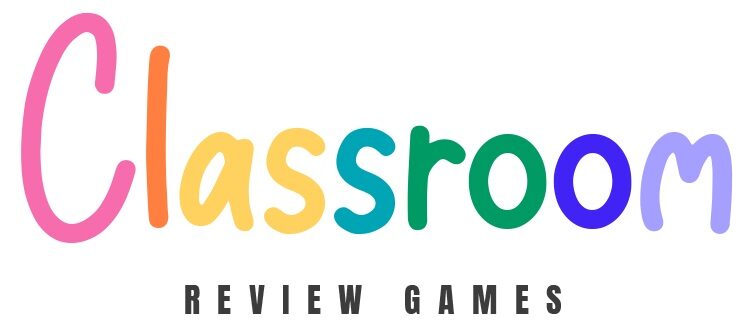20 Quiet Classroom Games for When You’re Bored
Ever finished your work and found yourself sitting bored in the classroom, staring at the clock, waiting for it to finally be recess? Well, guess what? We’ve got some top-secret, totally fun games you can play with your table neighbor when you are bored in the classroom! These games are sneaky—you can play them quietly without the teacher ever knowing! We’ve got classics like Hangman and Tic-Tac-Toe, along with some doodles to draw and quite games to play that’ll keep your brain busy and entertained. So next time you’re feeling bored in the class, grab a buddy, and play one of these quick and quiet games! Just remember… keep it low-key, and have some fun on the sly!
1. 20 Questions
One student thinks of an object, place, or person and writes it down on a piece of paper, folding it so their neighbor can’t see it. This way, they can’t change their mind halfway through! The other student asks yes/no questions to try to guess what it is. They have up to 20 questions to figure it out. If the answer is guessed correctly, they can switch roles. If not, the student reveals the answer by showing the paper at the end.
2. This or That
This is a perfect classroom game to play for bored students. One student quietly whispers a quick this or that question to their neighbor (e.g., “Would you rather have wings or a tail?” or shorter “wings or tail?”). The neighbor whispers back their answer, and they compare choices. You can also write it on a piece of paper to be even quieter.
3. Word Chain
One student whispers a word to their neighbor, and the neighbor has to respond with a word that starts with the last letter of the previous word. This continues back and forth quietly.
For example:
- Student 1: “Apple”
- Student 2: “Elephant”
- Student 1: “Tiger”
- Student 2: “Rabbit”
4. Memory Game (Draw Version)
One student draws a few doodles on a piece of paper. The neighbor has 10 seconds to memorize them before the drawing is covered. The neighbor then writes or draws what they remember. The winner is the student who remembers and reproduces more doodles correctly.
5. Silent Ball (Paper Version)
Students crumple a piece of paper into a small ball. Sitting at their desks, they quietly toss it back and forth to each other without speaking or making noise. The challenge is to avoid being noticed by the teacher while keeping the tosses as silent as possible. If one student drops the ball or makes noise, they lose the round. The winner is the student who manages to catch and throw the paper without being caught or causing any noise.
6. I Spy (Whisper Version)
One student whispers “I spy with my little eye, something that is [color/size/etc.]” and their neighbor has to guess the object. They go back and forth trying to guess quietly.
7. Two Truths and a Lie
Is there a more perfect time to learn fun facts about each other than when you are bored in the classroom? Quietly share two truths and one lie with your neighbor, and see if they can spot the lie. It’s a fun and sneaky way to stay entertained while keeping things low-key!
8. Pictionary (Mini Quiet Version)
One student quietly sketches a word or object on their notebook—something simple like a cat, a house, or a tree. They don’t speak or give hints, and their neighbor has to guess what it is by looking at the drawing. Once the neighbor guesses correctly, they switch roles, and the second student draws a new object. To make it fair, students should only draw basic things that can be recognized with simple sketches.
9. Quick Draw Challenge
Each student chooses an object or concept in their mind (for example, “a tree,” “a car,” or “a pizza”) and has exactly 30 seconds to draw it on a small piece of paper. The drawing must be completed quickly, so it doesn’t have to be detailed or perfect! After 30 seconds, the student quietly shows the drawing to their neighbor, who tries to guess what the object or concept is.
10. Hangman (Paper Version)
One student thinks of a word and draws empty spaces on a piece of paper representing each letter. Their neighbor quietly guesses letters, one at a time. If the guessed letter is correct, the first student fills it in the appropriate space(s). If the guess is wrong, they draw part of a hangman (e.g., head, body, arms, legs) for each incorrect guess. The game ends when the word is guessed correctly or the hangman is fully drawn.
11. Tic-Tac-Toe
One student draws a Tic-Tac-Toe grid on a piece of paper, and they take turns with their neighbor putting Xs and Os in the boxes. First to get three in a row wins. Easy, classic, and quiet!
12. Word Association (Whisper Version)
One student whispers a word to their neighbor, and their neighbor has to whisper back a word that is related to the first one. This continues quietly, going back and forth, with each word having to connect to the previous one in some way. The goal is to keep the chain going without repeating words or getting stuck.
Example:
- Student 1 whispers: “Dog.”
- Student 2 whispers: “Bone.”
- Student 1 whispers: “Skeleton.”
- Student 2 whispers: “Halloween.”
- Student 1 whispers: “Pumpkin.”
- Student 2 whispers: “Orange.”
13. Categories (Quiet Version)
One student picks a category (like animals, countries, fruits, etc.) and whispers the category to their neighbor. They take turns quietly naming something from that category. If a player can’t think of something, repeats an answer, or takes too long to respond, they lose the round.
Example:
- Student 1 whispers: “The category is fruits.”
- Student 2 whispers: “Apple.”
- Student 1 whispers: “Banana.”
- Student 2 whispers: “Orange.”
- Student 1 whispers: “Grape.”
- Student 2 whispers: “Watermelon.”
14. Doodle Challenge
Each student has 30 seconds to draw a quick, simple doodle on a small piece of paper. The doodle can be anything—a tree, a house, a star, a cat, etc. After 30 seconds, they swap papers with their neighbor. The neighbor then looks at the doodle and tries to guess what it is by whispering their answer.
Example:
- Student 1 quickly doodles a flower: a circle for the center, petals around it, and a stem.
- Student 2 quickly doodles a sun: a circle with rays coming out.
- After 30 seconds, they swap papers. Student 1 looks at the sun and whispers, “Is this a sun?”
- Student 2 looks at the flower and whispers, “Is this a flower?”
15. Draw and Pass
One student starts by drawing a small part of a picture (like a tree or house), then passes the paper to their neighbor, who adds something new to the drawing. They quietly go back and forth to complete a picture.
16. Alphabet Drawing
One student picks a letter from the alphabet (for example, “B”) and quietly tells it to their neighbor. The neighbor then has 30 seconds to draw something that starts with that letter (for example, “banana”). After the drawing is done, the first student tries to guess what the object is.
Example:
- Student 1 gives the letter “C” to Student 2.
- Student 2 draws a simple cat.
- Student 1 looks at the drawing and guesses, “Is that a cat?”
- They then switch roles: Student 2 picks the letter “T” for Student 1, who draws a tree.
17. Miniature Puzzles
One student creates a small, simple puzzle on a piece of paper for their neighbor to solve. This could be a mini-maze, a connect-the-dots puzzle, or something similar. The puzzles are meant to be quick and easy to solve quietly at their desks.
Types of Puzzles:
- Mini-Maze: The student draws a simple maze with a clear start and end point, and their neighbor uses a pencil to solve it by finding the path through the maze.
- Connect-the-Dots: The student draws numbered dots in a specific arrangement, and the neighbor has to connect the dots in order to reveal a picture.
- Word Search (Mini Version): The student draws a mini word search grid and fills in a few words for their neighbor to find quietly.
- Sudoku (Basic Version): A very simple 3×3 grid puzzle where students fill in missing numbers 1-3 without repeating any in a row or column.
18. Opposite Day (Whisper Version)
Students give each other simple whispered commands (like “raise your hand”), but the other person must do the opposite action quietly.
19. Copycat Drawing
One student quietly draws a simple shape or small picture (like a house, tree, or star) on their paper. After they finish, they show the drawing to their neighbor for 5-10 seconds, just long enough for them to memorize it. The neighbor then has to draw the same shape or picture from memory without looking at the original. Afterward, they compare drawings to see how close the second drawing is to the original.
20. Secret Message
One student writes a secret message in their notebook using either a code, symbols, or scrambled letters. They then quietly pass the message to their neighbor, who has to decode or figure out the hidden message. The student who wrote the message can choose to create a simple code, use letters in reverse, or even scramble the words. The neighbor tries to solve the message based on clues or logic.
Example:
Student 1 writes a message using a simple code:
“H e l l o” becomes “I f m m p” (shifting each letter by 1 in the alphabet).
- Student 1 passes the notebook to Student 2, who has to figure out the message.
- Student 2 notices that the letters seem shifted and tries to decode it, realizing the message is “Hello.”
Alternatively:
- Student 1 writes a scrambled word, like “etaerc” for “create.”
- Student 2 has to rearrange the letters to guess the correct word.


